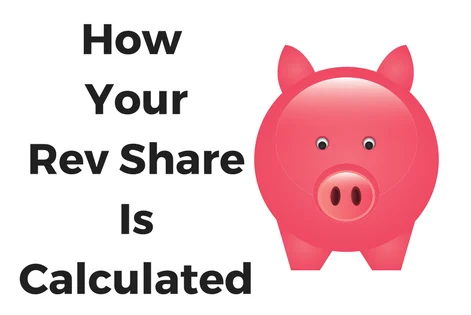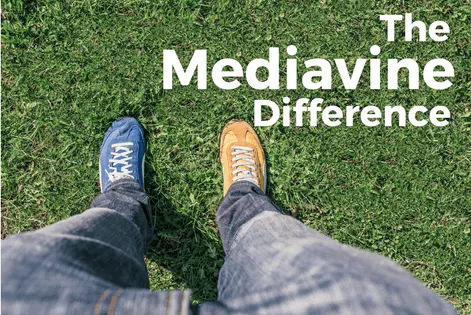Mediavine Revenue Share: Why Less is More and What Our Competitors Won’t Tell You


We know we’re not the only ad management company in town, and we’re more than okay with that. However, what we’re not okay with is the misinformation and incomplete pictures painted by some of those competitors.
As the network of transparency, we’ve been as up front as possible about our revenue share since our inception. It’s been in our contract that all publishers signed, throughout our emails, posted on our website, and in our help articles. Our revenue share is transparent here at Mediavine, and it’s equal for all our publishers.

On deals run through our ad server, it’s 75 percent to our publishers and 25 percent to Mediavine. On third party partnerships we run such as ZergNet, Chicory, and GumGum In-Image ads, it’s 80 percent to our publishers and 20 percent to Mediavine.
Does that revenue share sound too low? We promise you it’s not, even when you stack them up to our competitors.
Why?
What’s not immediately obvious when a desperate competitor emails you trying to talk you into leaving Mediavine for a “higher revenue share,” is what exactly that revenue share is on.
It’s on the ad revenue, right?
Well, sort of. Before we get into the details, let’s first start with a math question.
What would you rather have, 75 percent of $1.00 or 80 percent of $1.00 after we remove $0.20 in fees?
We’ll save you the math. You’ll take the $0.75 from Mediavine over the $0.60 from our competitors.
Wait, are you saying the Mediavine RPM is higher? Long term more than likely, but that’s not what we’re referring to here. What we’re referring to is a dirty secret of the ad industry that our competitors aren’t telling you.
Inside every contract you’ve ever signed is the right for your ad network to make adjustments for things such as discrepancies, ad serving fees, sales commissions, and other third party costs or adjustments you have no control over.
They’re able to take that “money” off the top. In our example, that was the $0.20 they took from your $1.00. What makes Mediavine truly different is those fees come out of OUR side.
Our dashboard is hooked up directly to our ad server (Google DFP) and all the numbers you see are based on exactly what’s reported. You could divide out your rev share and we could email you reports directly out of our ad server and they would line up exactly. When we go to pay you, we pay off those exact numbers.
Because other companies don’t operate that way, and the reason why you can’t actually compare our revenue share to a third party in a straight apples-to-apples comparison.
Most companies in this industry consider the dashboard numbers, or what’s reported in the ad server, as estimates. You’ve likely experienced this in the past where the number you saw all month magically changed before you got paid.
This is because most other companies pay you after they adjust down for discrepancies, ad serving fees, administrative costs, sales commissions, and all of those other third party fees we just mentioned. Mediavine is solely owned and operated.

Those “estimates” are what we’re paying you off of. We pay the rest of those fees out of our side. As your ad management company, we feel it’s our responsibility to manage discrepancies, pay the ad serving costs, and pay our sales reps. Not yours.
Okay, we keep mentioning these terms, but there’s probably a big one you’ve never heard of before and it’s likely the biggest of them.
Discrepancies are the difference between what the ad server says you earned, and what the ad partner says you earned.
All of the ad partners have their own ad server and their own reporting, separate from Mediavine’s.
Advertisers, in general, will only pay out on *their own reporting*, which is why so many networks either don’t show you a daily view, or if they do they call it an “estimate” and adjust the daily/monthly view once they have numbers in from the ad partners.
There’s typically a 5-10% discrepancy per ad partner at the end of the month.
Why? Let’s use a simple example.
Let’s say an advertiser claims they only served 100 ads, but our ad server says they served 110.
Advertisers always under-report. They’re not doing anything shady, but even computers can make mistakes. An ad may say it rendered according to our ad server, but due to slow internet connection, broken ad code, or whatever the cause, it never actually serves.
In Mediavine’s universe, that’s not your fault. We pay you for the full 110 ads. Other companies will pay you for the 100 because they feel it’s not their fault either.
As the network of transparency, however, we own those discrepancies. We work with advertisers and do everything in our power to get rid of discrepancies, but they will always exist as long as we run our own ad server and advertisers run theirs.
We’re eating the cost of the 10 impressions the advertiser says didn’t get served and therefore won’t pay for.
If you are with another network that states their revenue share is 25%, but they are paying you after discrepancies are removed and they charge you extra fees, their revenue share jumps from 25% to more like 30-35%, or even higher, depending on reporting for the month.
Those other serving fees likely make more sense. Ad serving fees are the cost of our ad server and we just pay that and don’t charge you a cent for ad serving. Our sales reps are also paid for any private marketplace deals they sell, directly from our 30%. Other administrative fees? We just never make them up and charge you for them.

We did our due diligence. We made the revenue share as low as we could make it to still cover the cost of these things out of our side, while allowing us to still run a rapidly growing business so that you make a great income and know exactly what that income is every day.
We just wanted to give some clarity into how this all works for the next time some dishonest company tries to convince you otherwise.
Stay up to date with the latest from Mediavine
Welcome to the much-anticipated release of the fifth-annual edition of “The Best eCPM Days of the Year” calendar. Each year, we analyze historical trends to provide publishers with a graphical …
“Let’s talk about politics.” We know. This is a phrase absolutely no one wants to hear uttered around the dinner table or backyard barbecue these days. But hear us out. …
Ah, July. It’s a glorious month of sand-filled swimsuits, mosquito invasions, broken air conditioners and applying sunscreen only to look like cooked lobsters. It’s also the start of a new …